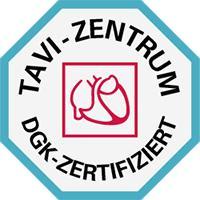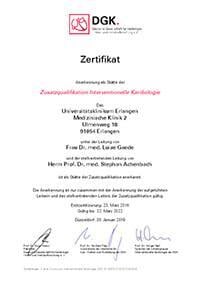Aortic valve stenosis develops when the leaflets of the aortic valve lose their elasticity, which is why the valve cannot open fully and perform its function properly. This causes additional load on the heart.
Most often, elderly people suffer from this heart disease, which makes it more complicated to perform surgical treatment.
Content
- Overview
- Symptoms
- Diagnostics
- Treatment
- Where can I undergo aortic valve stenosis treatment in Germany?
- The cost of treatment of aortic valve stenosis in Germany
- How can I undergo aortic valve stenosis treatment in Germany?
Overview
Aortic valve stenosis is a fibrous transformation of the aortic valves that leads to a narrowing of the aortic opening and decreased ejection of blood from the left ventricle into it. The aortic valvular heart disease is accompanied by a chronic systolic overload of the left ventricle with the progression of myocardial hypertrophy and stenosis narrowing, that aggravates the circulatory failure.
The main cause of aortic valve stenosis is rheumatism. The second most frequent etiological factor is atherosclerosis. The third most important factor among all the causes of aortic valve stenosis is congenital heart diseases (bicuspid aortic valve, congestive heart failure, hypoplasia of the aortic valve).
Clinical risk factors of the degenerative aortic valve stenosis development are similar to those for atherosclerosis of the coronary vessels. Common risk factors of the cardiovascular system diseases, such as age, smoking, high levels of low-density lipoprotein and cholesterol in the blood, arterial hypertension, and metabolic syndrome, are associated with the onset and progression of aortic valve stenosis. Elderly valve stenosis patients usually have underlying coronary or peripheral vascular disease. The risk factors associated with the onset of valvular heart disease may differ from those that contribute to the development of the disease, but the disease progresses more rapidly in old age.
Symptoms
Aortic valve stenosis patients often experience:
- Shortness of breath on physical exertion
- Angina attacks
- Rapid fatigue, muscle weakness
- Tachycardia
- Attacks of cardiac asthma and pulmonary edema (in severe cases)
Diagnostics
Methods for diagnosing aortic valve stenosis include:
- Echocardiography. It is used to visualize the chambers of the heart and the aortic valve, assess the blood flow through the heart and severity of the condition. Echocardiographic procedures allow visualizing morphological changes in the valve apparatus (the nature of stenosis, the degree of calcification), as well as determining hemodynamic parameters (transvalvular gradient) and assessing myocardial reserves (ejection fraction, wall thickness of the left ventricle).
- Computed tomography (CT) of the heart. The examination is required to create detailed images of the heart and heart valves. It can be used to measure the size of the aorta and to examine the aortic valve in detail.
- Cardiac catheterization. This method gives a detailed visual picture of the heart arteries and allows doctors to measure the pressure in the chambers of the heart.
Also, during the examination, the patient may have ECG, exercise ECG, and stress tests. Electrocardiographic data often indicate left ventricular hypertrophy and overload, coronary insufficiency (relative or due to concomitant damage of the coronary arteries).
X-ray examination is characterized by the aortic configuration of the heart due to an increase in the left ventricle and the heart dysfunction. Often there is also a post-stenotic expansion of the ascending aorta.
Treatment
The 10-year mortality rate of untreated patients with aortic valve stenosis reaches 80-90%. Therefore, all patients with clinical manifestations of aortic valve stenosis have permissions for urgent treatment.
With minor symptoms, regular monitoring in the department of cardiology, along with following the principles of a healthy lifestyle and symptomatic drug therapy, is sufficient. More severe cases may require aortic valve replacement. In some cases, a doctor of the department of cardiology may recommend surgery even if there are no severe symptoms.
Possible surgical treatments include aortic valve repair and aortic valve replacement or implantation.
The indications for aortic valve stenosis replacement are:
- Congestive heart failure
- Valve infection that is resistant to treatment
- Septic embolism
- Regurgitation of blood (reverse blood flow)
Surgical treatment of aortic valve defects consists of replacing it with an artificial heart valve prosthesis.
There are two types of heart valve prostheses, i.e. biological and mechanical ones.
With biological prosthetic heart valves, there's no need to take anticoagulant therapy (artificial blood thinning). However, biological aortic valve prostheses have short service life. Already in the 2nd year after the surgery, degenerative changes in valves and their compaction may be observed, the valves experience elasticity failure.
A mechanical heart valve is implanted for life. In the presence of modern mechanical prostheses of heart valves, their only significant drawback is constant controlled anticoagulant therapy.
The aortic valve replacement is performed under general anesthesia, in conditions of artificial circulation and cardioplegic protection of the myocardium. The average duration of the operation is 3 hours.
After the aortic valve replacement, patients are admitted to the intensive care unit where they receive complex intensive therapy. After that, patients are transferred to the department of cardiology. In about 7-10 days they are discharged from the hospital and undergo further rehabilitation at home. Patients’ return to normal life occurs on average in 1-1.5 months after surgery.
Where can I undergo aortic valve stenosis treatment in Germany?
Medical tourism is becoming more and more popular these days, as a treatment in Germany often ensures a much better quality of aortic valve stenosis therapy.
The following hospitals show the best success rates in aortic valve stenosis treatment in Germany:
- University Hospital Oldenburg
- University Hospital Essen
- University Hospital Ulm
- University Hospital Frankfurt am Main
- University Hospital Tuebingen
You can find more information about the hospitals on the Booking Health website.
The cost of treatment of aortic valve stenosis in Germany
The prices in European hospitals listed on the Booking Health website are relatively low. With Booking Health, you can undergo aortic valve stenosis treatment in Germany at an affordable price.
The cost of treatment in Germany varies, as the prices depend on the hospital, the specifics of the disease, and the complexity of its treatment.
The cost of treatment of aortic valve stenosis with aortic valve replacement in Germany starts with 23,990 EUR.
The cost of treatment of aortic valve stenosis with transcatheter aortic valve implantation (TAVI) in Germany starts with 32,824 EUR.
You might want to consider the prices of additional medical procedures and follow-up care. Therefore, the ultimate cost of treatment of aortic valve stenosis may differ from the initial price.
To find out information about the overall cost of treatment in Germany, contact us by leaving the request on the Booking Health website.
How can I undergo aortic valve stenosis treatment in Germany?
It is not easy to self-organize any treatment abroad. It requires certain knowledge and expertise, as well as receiving permission for travelling abroad. Thus, it is safer, easier, and less stressful to use the services of a medical tourism agency.
As the largest and most transparent medical tourism agency in the world, Booking Health has up-to-date information about aortic valve stenosis treatment in the best European hospitals. We will help you select the right medical center taking into account your wishes for treatment.
We want to help you and take on all the troubles. You can be free of unnecessary stress, while Booking Health takes care of all organizational issues regarding the treatment of aortic valve stenosis. We provide our services so that you can undergo aortic valve stenosis treatment safely and successfully.
Medical tourism can be easy! All you need to do is to leave a request on the Booking Health website, and our manager will contact you shortly.
Authors: Dr. Nadezhda Ivanisova, Dr. Sergey Pashchenko



















